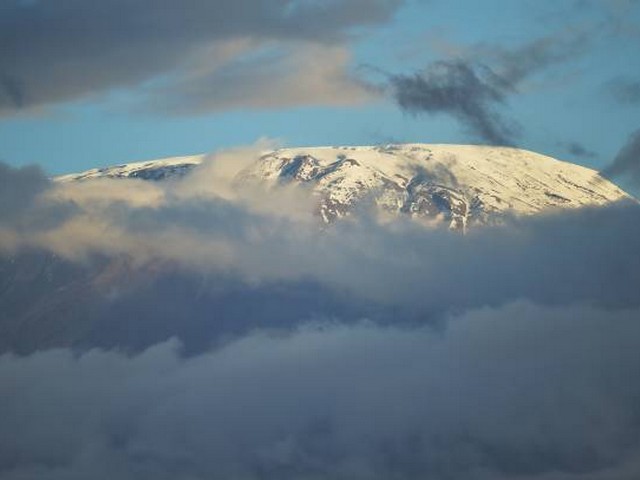How To Manage Logistics For Group Kilimanjaro Treks
Discover the Secrets of Seamless High-Altitude Adventures
Embarking on a group trek up the majestic slopes of Mount Kilimanjaro is not just a journey through diverse landscapes, from lush rainforests to arid alpine deserts; it is a voyage into the essence of camaraderie and collective challenge. At Kilimanjaro Centre for Trekking and Ecotourism (KCTE), we understand that the success of such an epic adventure hinges significantly on efficiently managing logistics. Here, let us guide you through orchestrating a flawless group trek to the Roof of Africa.
Understanding the Importance of Logistics
Logistics in the context of a Kilimanjaro group trek encapsulates everything from travel arrangements and accommodation to porter services and meal planning. Effective logistics ensure that every trekker has a safe, enjoyable, and transformative experience. It’s about making sure that all moving parts of the trek are synchronized, enabling the group to focus on the experience rather than worry about the nuts and bolts.
Structuring Your Group’s Adventure
1. Early Planning
Begin planning your Kilimanjaro trek at least 6 months in advance. This timeframe allows you to assess group needs, obtain necessary permits, and make reservations. Early planning also provides ample time for participants to physically prepare and acclimate to altitude, significantly enhancing their chances of reaching the summit.
2. Choosing the Right Route
Kilimanjaro offers several routes, each with unique characteristics. For groups, routes like the Machame, Lemosho, and Rongai provide a good balance of scenic views and acclimatization profiles. Consider the group’s experience and fitness levels when selecting the route.
3. Booking with A Reputable Operator
Partner with an experienced and licensed tour operator like Kilimanjaro Centre for Trekking and Ecotourism (KCTE). We ensure high safety standards, experienced guides, and comprehensive support, including porters and cooks. An adept operator is pivotal in handling the complex logistics of group coordination.
4. Accommodation and Meals
Decide whether your group prefers camping or hut accommodations available on certain routes. Additionally, communicate any dietary restrictions to your operator early on. At KCTE, we pride ourselves on providing delicious, energy-rich meals tailored to meet all dietary needs, ensuring you have the necessary fuel to conquer Kili.
5. Transport and Equipment
Organize transport to and from Kilimanjaro International Airport with your tour operator. Check if they provide equipment rentals for gear like sleeping bags, trekking poles, and insulated mats, which can significantly reduce your packing challenges.
6. Health and Safety
Ensure everyone in the group has travel insurance that covers high altitude trekking. Group leaders should facilitate health checks, and all members should be informed about the symptoms of altitude sickness. A responsible tour operator, like KCTE, will provide essential support, including first aid trained guides and emergency evacuation services if necessary.
Leveraging Technology for Efficient Group Coordination
In today’s digital age, leverage technology to streamline communication and enhance preparation:
- Group Chats: Platforms like WhatsApp can be used for instant communication and updates.
- Fitness Apps: Encourage members to use fitness apps to track their training progress.
- Document Sharing: Google Drive or Dropbox can be used for sharing essential documents like packing lists, travel itineraries, and emergency contact information.
The Role of Team Spirit and Mental Preparation
The mental and emotional aspects of preparing for Kilimanjaro cannot be understated. Foster a sense of team spirit and collective determination by organizing pre-trek meetups or virtual sessions discussing each stage of the trek. Mental resilience is as crucial as physical stamina, and a united group with a positive mindset can significantly enhance the trekking experience.
FAQs for Group Kilimanjaro Treks
Q1: How large can a group be for a Kilimanjaro trek?
A1: While Kilimanjaro National Park does not impose strict limits, we recommend groups of 10-15 people to maintain a cohesive experience. However, KCTE can accommodate groups of various sizes with optimal support.
Q2: Are there special rates for group bookings?
A2: Yes, Kilimanjaro Centre for Trekking and Ecotourism offers discounted rates for larger groups. Please contact us directly for more details and a tailored quote.
Q3: What is the best time of year for a group trek on Kilimanjaro?
A3: The best times are during the dry seasons, from late June to October and from late December to early March. These periods offer the most favorable weather conditions for climbing.
Q4: Can our group get training advice before our trek?
A4: Absolutely! KCTE provides comprehensive pre-trek training guidelines and can arrange personalized training sessions with our experienced guides if required.
Ready to Conquer Kilimanjaro?
Embarking on a group trek to Mount Kilimanjaro is an unforgettable adventure that bonds participants in unique and profound ways. By entrusting your logistics to Kilimanjaro Centre for Trekking and Ecotourism, you ensure a journey that is as seamless as it is exhilarating. Our dedicated team is committed to delivering an exceptional trekking experience that you will cherish for a lifetime.
Are you ready to take on the challenge of Kilimanjaro with your group? Contact KCTE today, and let us help you reach the summit in the spirit of African adventure! Every step you take is a story waiting to be told – let’s make it a grand one.




